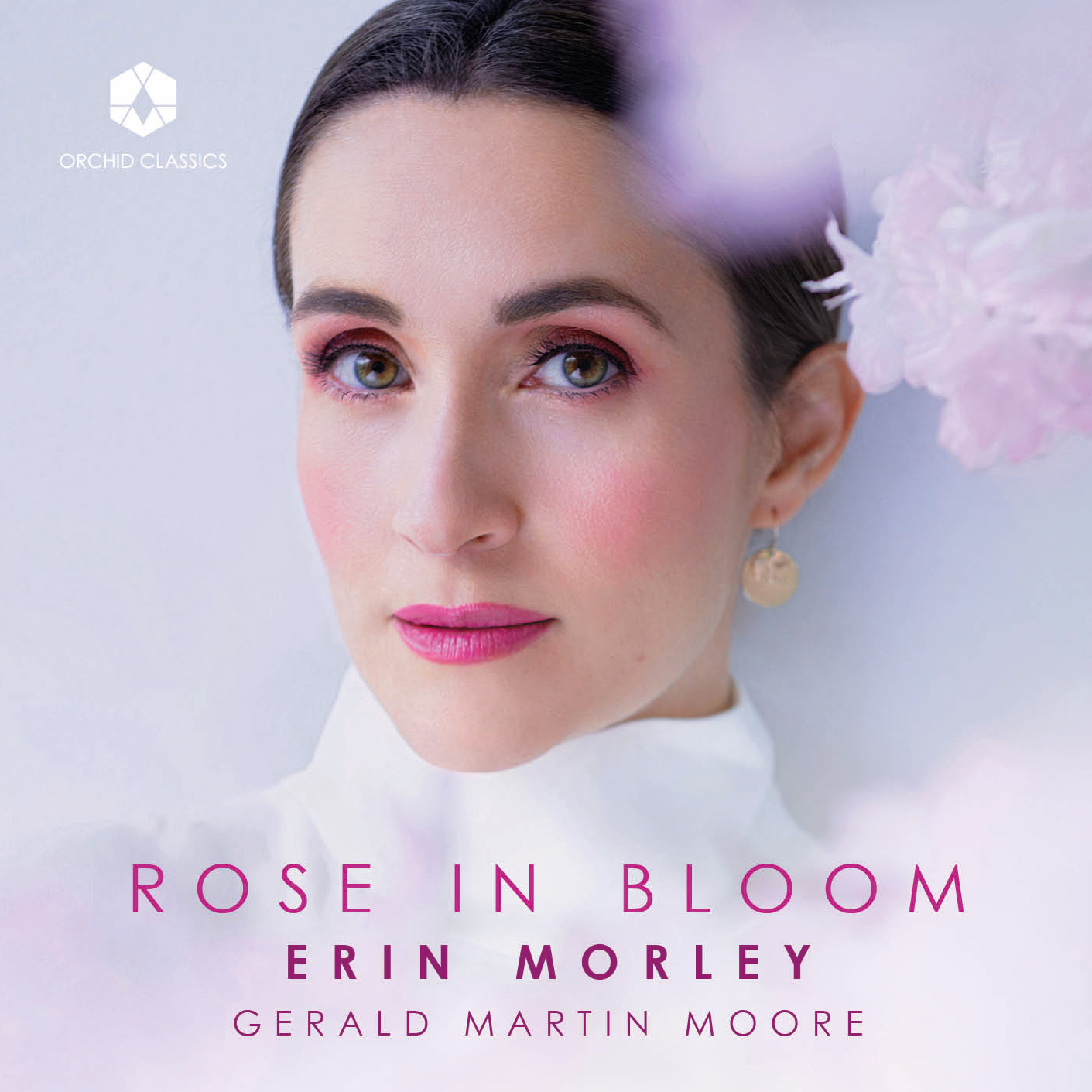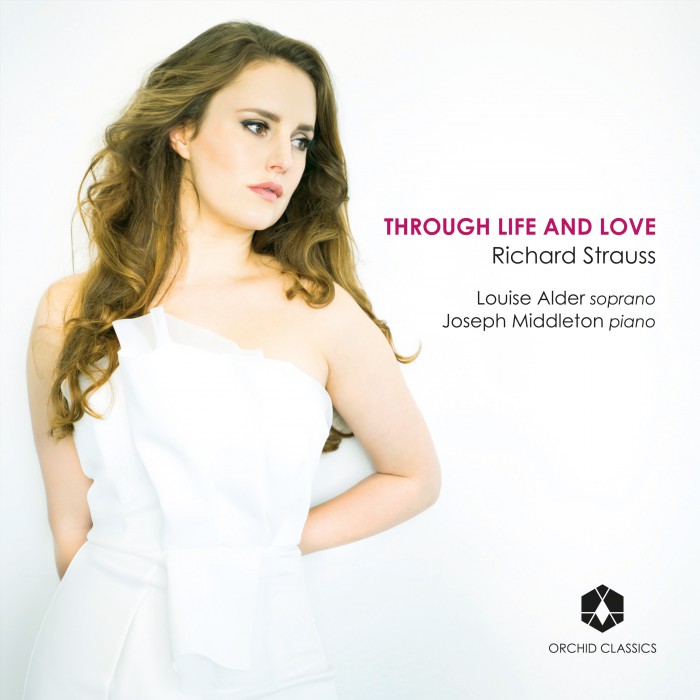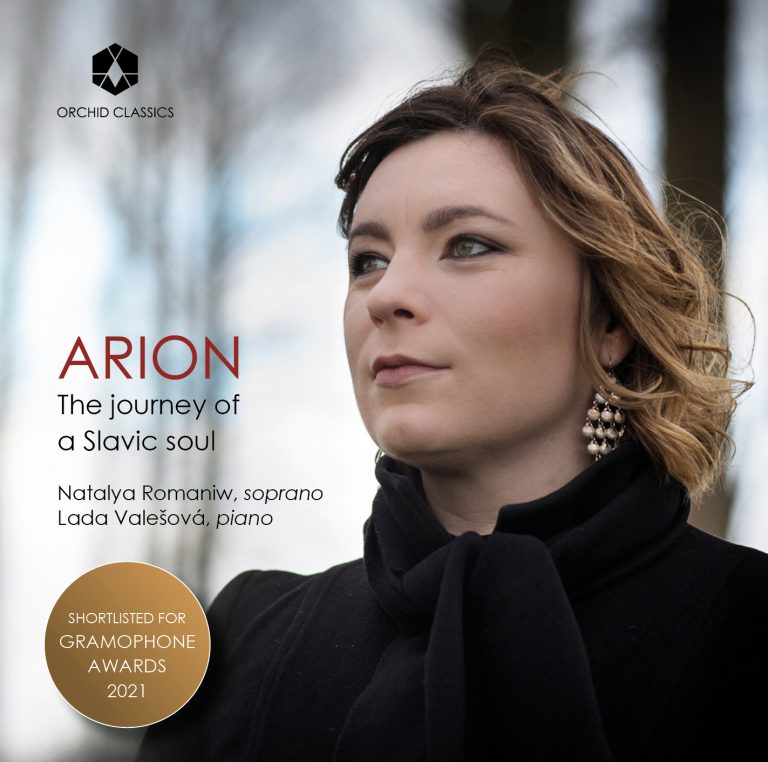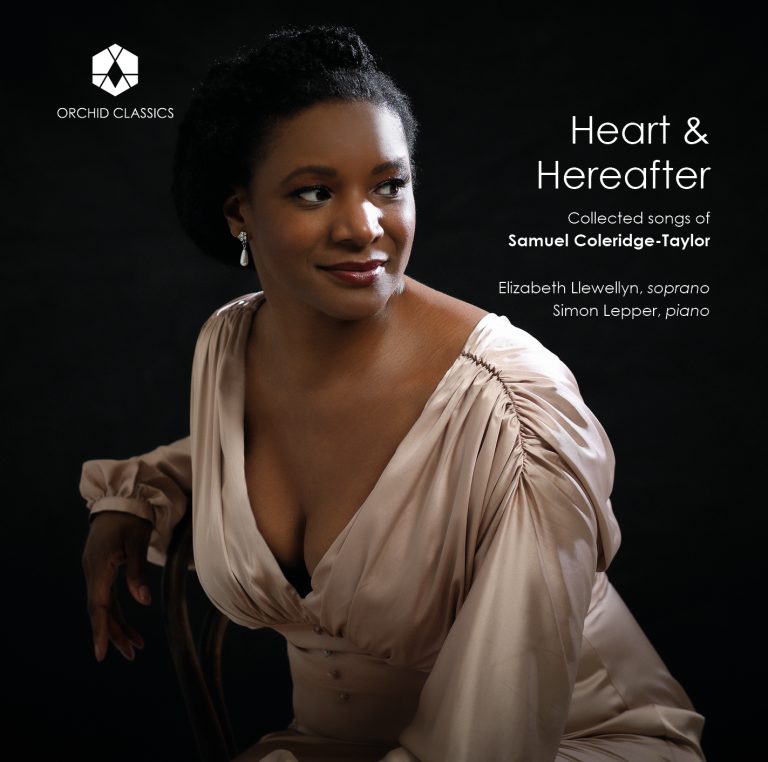Artist Led, Creatively Driven

Rose In Bloom
Erin Morley, soprano
Gerald Martin Moore, Piano
Release Date: Apr 19th
ORC100294
ROSE IN BLOOM
Camille Saint-Saëns (1835-1921)
1. La Libellule
Nikolai Rimsky-Korsakov (1844-1908)
2. The Rose Enslaves the Nightingale
Alban Berg (1885-1935)
3. Die Nachtigall
Camille Saint-Saëns
4. Le Rossignol et la Rose (Parysatis)
Ricky Ian Gordon (b.1956)
Huit Chansons de Fleurs
5. We Should Not Mind So Small a Flower
6. I Wandered Lonely As a Cloud
7. The Tulips
8. One Perfect Rose
9. Peonies at Dusk
10. Her Garden
11. Afterlife with Lilacs
12. Play, Orpheus
Darius Milhaud (1892-1974)
13. Tais-toi, Babillarde
Sergei Rachmaninov (1873-1943)
14. Daisies
15. Lilacs
Alexander Zemlinsky (1871-1942)
16. Vöglein Schwermut
Johannes Brahms (1833-1897)
17. Lerchengesang
Michael Head (1900-1976)
18. Bird-song
Ransom Wilson, flute
Arthur Sullivan (1842-1900)
19. ‘Neath My Lattice Through the Night (The Rose of Persia)
Ransom Wilson, flute
Ivor Novello (1893-1951)
20. We’ll Gather Lilacs (Perchance to Dream)
Erin Morley, piano
Erin Morley, soprano
Gerald Martin Moore, piano
“Rose in Bloom” is my debut recital disc, and like the blossoming of a flower, this opportunity feels like a special moment and a rite of passage.
I have always been drawn to flowers, perhaps partly because my mother is a master gardener, and I am often touched by poetry about flowers and their life cycles. I have often sung the role of Sophie in Strauss’s Der Rosenkavalier, an opera about the passage of time, and about savoring the bloom of the moment before it passes us by. When my dear friend So-Chung Shinn approached me about her and her husband Tony Lee’s commission of a new song cycle by Ricky Ian Gordon called Huit Chansons de Fleurs, I felt an immediate connection to the poetry. Ricky’s texts deal with themes of death and resurrection, the intoxication of fragrance, and the impermanence of beauty, not unlike Strauss’s opera, and Ricky’s music touchingly connects these poems into a life cycle of their own.
I set to work right away with my teacher and pianist Gerald Martin Moore, looking through the wealth of vocal repertoire that is inspired by flowers, birds, insects, gardens… The lyric coloratura soprano voice has always been inclined towards songs about flowers and birds. The programme that results is, I think, a beautiful mix of well-known repertoire, new writing, and gems that have too long been neglected and now warrant rediscovery.
The title “Rose in Bloom” reflects our garden theme, even as it also borrows the name of the character who sings “‘Neath My Lattice Through the Night” from Arthur Sullivan’s comic opera The Rose of Persia (1899). The role of “Rose-in-Bloom” was written for the soprano Ellen Beach Yaw, but the aria has never been recorded professionally in its original key of B Major, with the cadenza that was written for Ms. Yaw. Also of note is the inclusion of Saint-Saëns’s “La Libellule”, which was written for Sibyl Sanderson and is very seldom heard, and Michael Head’s “Bird-song”, another rarity. We also layer in two haunting melodies: Zemlinsky’s “Vöglein Schwermut” and Rimsky-Korsakov’s “The Rose Enslaves the Nightingale”. Birds of all kinds are heard on this programme; the annoyingly persistent swallow outside your window, the lovesick nightingale who sings day and night to no reply, the bird of melancholy who visits death on its victims, and the lark with his heavenly greeting. Sometimes it is even the bird’s song that inspires the blossoming of the rose.
I decided to end the programme by accompanying myself singing Ivor Novello’s “We’ll Gather Lilacs”. I will never forget the day Gerald introduced me to this song, during the height of the pandemic, and how I was unable to contain my tears as I sang. I performed the Novello remotely that year for the Opera News Awards. Now that we are performing for each other in person again, the arts feel very much in a state of reunion and rebirth.
I dearly hope this record brings beauty to your lives and finds root in your hearts, as these melodies and poems have done for me.
Erin Morley, October 2023
Colours, scents, sounds, intoxications, life, death, and regeneration. The enduring idea of the garden signifies a magic and liminal space between the human and natural worlds. It is a site where so many species of flora and fauna of the earth and sky symbiotically meet, interact, and thrive. Human beings expect a certain mastery over such a realm as it is a human creation, conceived and laid out in whatever fashion we may fancy. Our hubris, however, only goes so far. No matter how much we try to cultivate, control, or dominate the garden and its animal inhabitants, nature always stays many steps (or wing strokes) ahead of us.
Like a grand garden with structured plots and wilder landscapes, this programme of songs proceeds with an organic unity across various composers, languages, periods, and styles of music. Rarities flourish alongside familiar blooms, providing a pleasing variety.
The opening selections introduce a range of insects and birds interacting with plant and human life. Written in 1893 for famed soprano Sibyl Sanderson, Camille Saint-Saëns’ “La Libellule” (“The Dragonfly”) is one of a select group of art songs (mélodies) for which the composer wrote his own text. Notoriously exacting in his approach to French poetry, Saint-Saëns imbues this coloratura setting with the agile movement of the insect, its vibrant hues, and its ominous predatory behavior amid flowers and water.
Next, three songs take nightingales and roses as principal subjects. “The Rose Enslaves the Nightingale” by Nicolai Rimsky-Korsakov from his early Four Romances, Op.2 (1865-1866), strikes a somber tone. The Persian-influenced text by Aleksey Koltsov compares the haplessness of a nightingale singing to a rose to a lover whose beloved has no idea she is the recipient of his songs. The symbol of the nightingale recurs in Alban Berg’s “Die Nachtigall” (“The Nightingale”), composed in 1907 and later included in the composer’s cycle Seven Early Songs (1928). The style of the piece deceptively recalls forerunners in Lieder like Robert Schumann, but Berg’s emergent voice as a student of Arnold Schoenberg resounds through. The dexterity of the setting enhances the implicit bitterness of Theodor Strom’s text about decisive passion congealing into uncertain meditation. The movement “Le rossignol et la rose” (“The Nightingale and the Rose”) comes from Saint-Saëns’s 1902 incidental music for the play Parysatis by Jane Dieulafoy. A wordless vocalise, the piece has only the title to inspire the listener. As the vocal line proceeds over a succession of chords, it evokes the sounds of a bird on a branch singing to its floral counterpart.
This premiere recording of Ricky Ian Gordon’s Huit Chansons de Fleurs (2021), commissioned by So-Chung Shinn and Tony Lee, now leads the garden journey through a variety of English-language texts, spanning from the nineteenth-century Romantics to Gordan himself. Emily Dickinson’s “We Should Not Mind So Small a Flower” and William Wordsworth’s “I Wandered Lonely As a Cloud” capture the joy and inherent majesty projected by the flowers amidst environments awash with colors. With “The Tulips”, Gordon captured his view of the arc of relationships through a tulip’s cyclical flourishes, witherings, and disappointments. This song segues into a jocose setting of Dorothy Parker’s wry “The Perfect Rose”, which apes with characteristic, with everything romantic about the delivery of a lone rose as a token of affection.
Solemnity surrounds the text of “Peonies at Dusk” and “Her Garden” by the poets Jane Kenyon and Donald Hall, respectively. Kenyon’s early death from leukemia has an uneasy foreshadowing in the dark June evening glow of the peonies of her text. Hall, Kenyon’s husband, crafted a wistful threnody for his wife by describing the decline of the garden after her death, weeds having replaced the peonies and other flowers as well as the birds and bees that attended them. While at work on the cycle, Gordon received Telmo Dos Santos’s poem “Afterlife with Lilacs”, which transmutes the resigned mood of the decayed garden into the joy of flowers in the hereafter. Gordon originally intended the cycle with a text by Langston Hughes. After a rights issue upended this scheme, Gordon provided another text of his own, “Play, Orpheus”. With a glorious gesture, the composer conjures the image of mythology’s greatest musician and his lyre, mustering the Spring and all its creations to life.
After the Gordon song cycle, the passage through the garden proceeds in different directions. For his Quatre Chansons de Ronsard (1941), composer Darius Milhaud turned to the sixteenth-century poet Pierre de Ronsard for his texts. In Milhaud’s setting of “Tais-toi, babillarde”, the singer becomes two characters: a “chattering” swallow and an annoyed lover whose peace of mind and amorous pursuits are interrupted by the bird’s elaborate vocalise.
Two songs by Sergei Rachmaninov explore the individual brilliance of specific blossoms. “Daisies”, from the Six Romances, Op.38 (1916), takes its text from Igor Severyanin. Here, the singer marvels at the magic of a vast carpet of daisies in hypnotic fashion, caring and loving them as a mother. “Lilacs”, from Rachmaninov’s earlier Twelve Romances, Op.21 (1900-1902), conjures up a familiar flower with a sense of disquiet. The singer finds delicate hope in its fragrances on a quest for happiness.
Two contrasting Lieder return the emphasis to birds. Alexander von Zemlinsky’s “Vöglein Schwermut” (“The Bird of Melancholy”) from his Ehetanzlied und andere Gesänge, Op.10 (1899-1901), depicts a little black bird who is not a companion of life but a companion of Death itself. The rise and fall of the accompaniment suggest its ominous swoop and melancholy song as signals to fated souls. The “Lerchengesang” (“Lark’s Song”) of Johannes Brahms (from the Vier Gesänge, Op.70) suggests the influence of a much less ominous herald. Brahms’ lark evokes a soothing mood as its song summons revivifying memories.
The avian theme continues in two numbers featuring flute accompaniment. “Bird Song” (1966), with text by Marjorie Rayment and music by Michael Head, depicts a seasonal progression through nature, signified by a series of birds: robin, curlew, blackbird, and nightingale. The ever-soaring heights of the birds’ climax in a stratospheric cadenza for the vocalist. Arthur Sullivan’s “‘Neath My Lattice Through the Night” from the 1899 opera The Rose of Persia (text by Basil Hood) presents similar challenges of tessitura. In this centerpiece from act one, the Sultana Zubeydeh (also known as Rose-in-Bloom) laments the constricted life of her grand abode in Persia, imagining the wind exhorting from outside, “O Let thy soul on wings of music soar beyond thy prison bars!” And soar it does in this recording, with Erin Morley and Gerald Martin Moore resurrecting the cadenza Sullivan wrote for the original Rose-in-Bloom, Ellen Beach Yaw, in its original key of B major.
The programme closes with songwriter Ivor Novello’s “We’ll Gather Lilacs”, originally written as a duet for his 1945 London musical Perchance to Dream. In this gentle song, the delights of flowers join with the peaceful notion of homecoming and tranquility. While Novello placed the number in the musical’s second act set in Victorian England, its folksong sentiments would have resonated strongly with a country emerging from the depths of the Second World War. With conflict and loss behind and the future ahead, the natural world and the magic of its blossoms lead us on then as they do now.
© Ryan M. Prendergast
Notes from the composer on Huit Chansons des Fleurs
When So-Chung Shinn came to me with the idea of commissioning a song cycle with her spectacular husband Tony Lee, she had in mind something having to do with flowers. Tony had asked her what she wanted for her birthday, and the very quintessence of graciousness, she said she wanted to be behind the creation of a new work. Lucky me, I was the recipient of the commission.
So-Chung sent me a little description of all the flowers she loves, but I had to take the idea and create a narrative in my head. It is always a matter of pleasing the commissioner but coming up with something you can get behind and hear music for as well. I already knew I wanted to use my Tulips poem which is really about the arc of a relationship as represented through the lifespan of the Tulips, their incremental disappearance, and, in many ways, disappointment, and Dorothy Parker’s “One Perfect Rose,” which is wry, bitter, cynical, and funny, in a way only Dorothy Parker can so pithily express. I thought of Jane Kenyon’s exquisite “Peonies at Dusk,” because knowing she died so young, at 48, of Leukemia, the poem has such a particular resonance, almost humanizing the Peonies, casting the moon as a sentient being, illustrating so beautifully how connected everything is, alive here, and revolving around and drawn to these exquisite blossoms. Then, I remembered her husband Donald Hall’s poem “Her Garden,” which he wrote after she died, his grief intermingled with his inability to care for what she had created, to keep alive what so represented her aliveness, because he was so broken, and I felt I already had a story. I found the Wordsworth, because it felt like pure joy to me, but also, if each of the songs has a color in my head, “The Daffodils,” is pure yellow and a good place to start.
My partner Kevin and I live on a lake, and every year, the first Daffodils, the shock of yellows, the oranges, the blinding whites, after the long snowy winters, sing of the newness that is about to enfold us in its green miraculousness. At first, the cycle ended with the Langston Hughes poem “Cycle,” or “New Flowers,” because it was lovely, and about rebirth, which is obviously optimistic, and apt, but then, my friend Telmo Dos Santos, a wonderful Canadian poet who I met at Banff, sent me his poem “Afterlife with Lilacs,” having no idea what I was working on. I felt I had to add it because it is so dazzling and immediately felt like the missing link.
Finally, there were unfortunately rights issues, namely, we could not get in touch with the Langston Hughes estate after so many happy collaborations. After almost a year’s frustration, I scrapped his poem, and I wrote my own text, “Play, Orpheus,” which ended up being fortuitous, because the first time I met So Chung, she entered the room and the most exquisite scent of Lillies of the Valley, Muguet de Bois, filled the room. I went right over to her and rudely put my nose to her neck, for the intoxication of the scent, so “Play, Orpheus” is for So-Chung, to remind us of the precious treasures of this world flowers are, and remind us of their, and everything’s, evanescence. Everything and everyone comes and goes, lives and dies, lives and dies. Death and resurrection. And of course, this is music, this is song, so the inclusion of Orpheus, the God of music, seems apt. “Huit Chansons des Fleur” is really about what flowers represent, their radiance, their flickering impermanence, the way they are used to celebrate, to hallow, as well as to mourn … and of course, their fragrance. Their fragrance.
Ricky Ian Gordon, 28th July 2021, revised 24th October 2023
Erin Morley
Soprano
Erin Morley is one of today’s most sought-after coloratura sopranos. Her performances have garnered critical acclaim worldwide with regular appearances on the world’s greatest opera stages including the Wiener Staatsoper, Teatro alla Scala, Royal Opera House – Covent Garden, Bayerische Staatsoper, Opéra National de Paris, Staatsoper Berlin, Glyndebourne Opera, Santa Fe Opera, Los Angeles Opera and of course, The Metropolitan Opera, where she has now sung more than 100 performances and has been featured in eight “Live in HD” broadcasts.
On operatic and concert stages, Morley has collaborated with celebrated conductors worldwide, including Riccardo Muti, Christian Thielemann, Riccardo Chailly, Gustavo Dudamel, Yannick Nézet-Séguin, Andris Nelsons, Seiji Ozawa, James Levine, Bernard Haitink and Simone Young.
Morley spent her early years studying violin and piano, and frequently collaborated with her violinist mother, Elizabeth Palmer. Morley completed her studies at the Eastman School of Music and The Juilliard School. Morley has received three GRAMMY nominations for recordings with The Metropolitan Opera, including her performance as the title role in Eurydice by Matthew Aucoin. Morley won the Beverly Sills Award in 2021, the Opera News Award in 2023, and was named “Chevalière dans l’Ordre des Arts et des Lettres” by the French Minister of Culture in 2023. This is Morley’s debut solo album.
www.erinmorley.com
Gerald Martin Moore
Piano
An internationally renowned voice and opera pedagogue, Gerald Martin Moore has worked as a vocal consultant for major opera productions at the Glyndebourne Festival Opera, Edinburgh International Festival, La Scala, Opéra National de Paris, and Festival d›Aix-en-Provence, and with such acclaimed performers as Renée Fleming, Erin Morley, Sabine Devieilhe, Natalie Dessay, Dame Sarah Connolly, Magdalena Kožená, Elīna Garanča, Isabel Leonard, and Javier Camarena.
Moore is the director of the Yale Opera and coordinator of vocal studies at the Yale School of Music. He has served as artistic associate of Carnegie Hall’s SongStudio programme led by celebrated soprano Renée Fleming. Moore has given master classes at the Merola Opera Program, Los Angeles Opera Young Artist Program, and Washington National Opera. He has taught at the Ravinia Festival’s Steans Music Institute, Music Academy of the West, the Metropolitan Opera’s Lindemann Young Artist Development Program, the Lyric Opera of Chicago’s Patrick G. and Shirley W. Ryan Opera Center, Opéra de Montréal’s Atelier Lyrique, the Glyndebourne Festival, Curtis Institute of Music, and the Santa Fe Opera’s Apprentice Program for Singers. He has also worked as a collaborative artist for opera, film, and television productions and is a frequent recitalist, most notably with Renée Fleming.
Ransom Wilson
Flute
Ransom Wilson has long been recognised internationally as one of the greatest flutists of his generation. He has recently launched an ongoing series of solo recordings on the Nimbus label in Europe.
As a conductor, he is starting his third season as Music Director of the Redlands Symphony in Southern California, and he continues his positions with the Lar Lubovitch Dance Company and Le Train Bleu ensemble. He has led opera performances at the New York City Opera, and was for ten years an assistant conductor at the Metropolitan Opera. He has been a guest conductor of the London, Houston, KBS, Kraków, Denver, New Jersey, Hartford, and Berkeley symphonies; the Orchestra of St. Luke’s; the Philadelphia Chamber Orchestra; the Hallé Orchestra; and the chamber orchestras of St. Paul and Los Angeles. He has also appeared with the Glimmerglass Opera, Minnesota Opera, and the Opera of La Quinzena Musical in Spain.
As an educator, he regularly leads master classes at the Paris Conservatory, Juilliard School, Moscow Conservatory, Cambridge University, and others. His recording career, which includes three GRAMMY Award nominations, began in 1973 with Jean-Pierre Rampal and I Solisti Veneti. Since then he has recorded over 35 albums as flutist and/or conductor. Mr. Wilson is Professor of Flute at the Yale University School of Music, and has performed with The Chamber Music Society of Lincoln Center since 1991.










